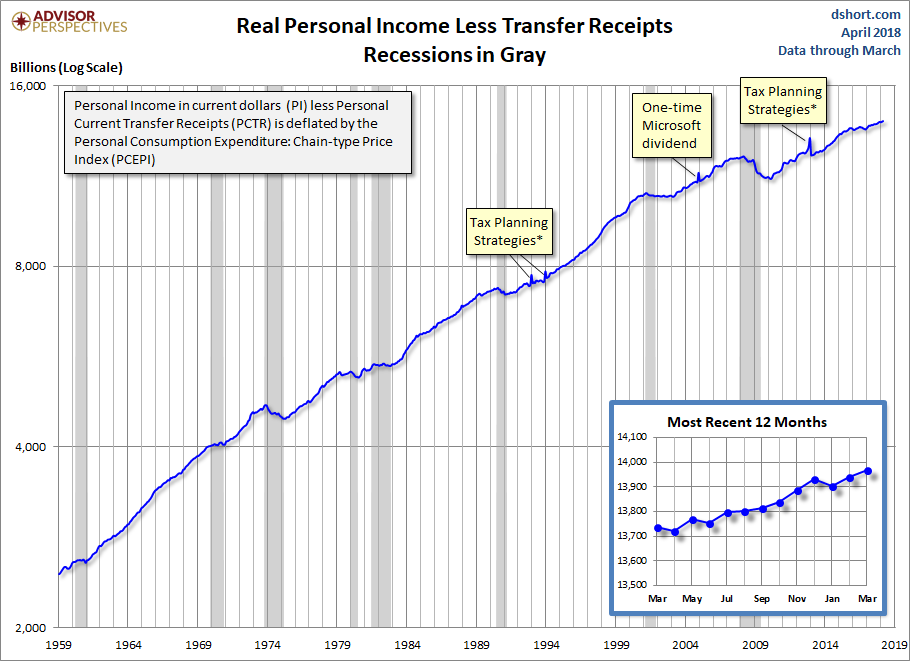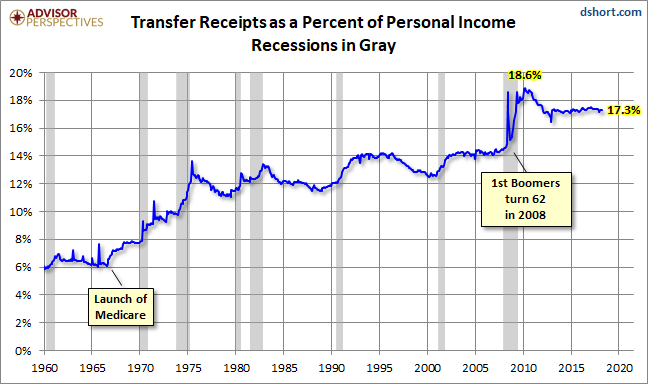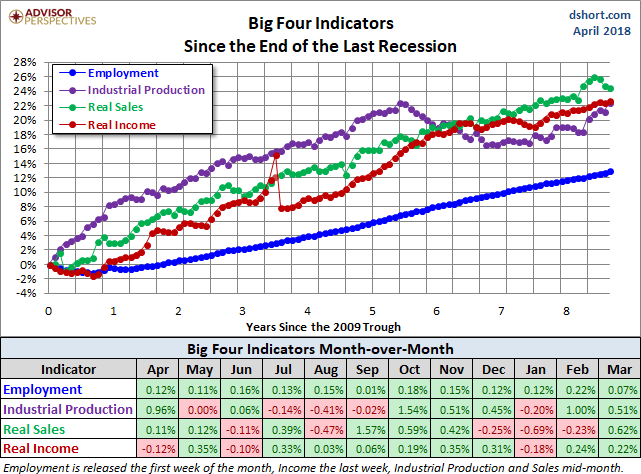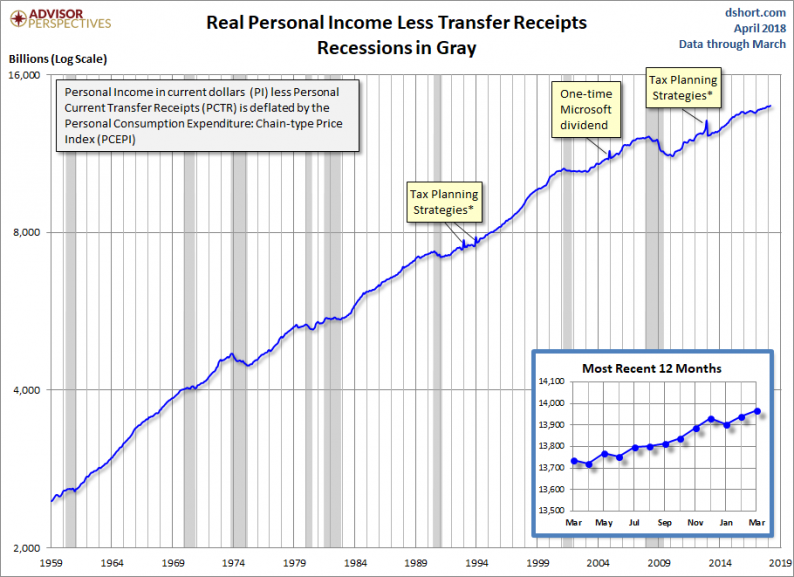Official recession calls are the responsibility of the NBER Business Cycle Dating Committee, which is understandably vague about the specific indicators on which they base their decisions. This committee statement is about as close as they get to identifying their method.
There is, however, a general belief that there are four big indicators that the committee weighs heavily in their cycle identification process. They are:
The Latest Indicator Data
Personal Income (excluding Transfer Receipts) in July rose 0.45% and is up 3.2% year-over-year. When we adjust for inflation using the BEA’s PCE Price Index, Real Personal Income (excluding Transfer Receipts) likewise rose 0.45%, since headline inflation as measured by the PCE Price Index was unchanged in July. The real number is up 2.4% year-over-year.

A Note on the Excluded Transfer Receipts: These are benefits received for no direct services performed. They include Social Security, Medicare & Medicaid, Unemployment Assistance, and a wide range other benefits, mostly from government, but a few from businesses. Here is an illustration Transfer Receipts as a percent of Personal Income.

The Generic Big Four
The chart and table below illustrate the performance of the generic Big Four with an overlay of a simple average of the four since the end of the Great Recession. The data points show the cumulative percent change from a zero starting point for June 2009.

Current Assessment and Outlook
The US economy has been slow in recovering from the Great Recession, and the overall picture has been a mixed bag for well over a year and counting. Employment and Income have been relatively strong. Real Retail Sales have been weak at best over the past twelve months, and Industrial Production has essentially been in a recession, although optimists are hoping that the March low was a trough and IP may now be in recovery mode.
Here is a percent-off-high chart based on an average of the Big Four. The interim high was in November 2014 (fractionally below zero at three decimal places). The indicator primarily responsible for this decline is Industrial Production. Incidentally, the last time the average of the four set an all-time high was in January 2006.














Leave A Comment